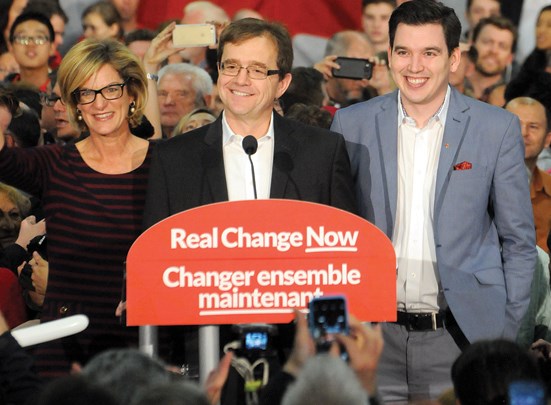Voters in North Shore ridings provided an interesting glimpse into the Liberal wave that swept the country on election day, said political commentators this week.
In Burnaby North- Seymour – a new riding that had been predicted as a battle between Conservatives and the NDP – not only did Liberal candidate Terry Beech win, but the percentage of votes garnered by political parties there came closest to mirroring how federal parties did across the province, said political strategist and pollster Greg Lyle of Innovative Research.
That’ll make the new riding a bellwether to watch in future, said Lyle.
The Liberal surprise there reflected the strength of the surge in that party’s support, said Gerald Baier, a political science professor at the University of British Columbia and North Shore resident.
“I don’t think anyone was thinking (Liberal candidate) Terry Beech was the guy who was going to pull that one off,” said Baier. “It’s not like he came up the middle. He had a pretty commanding lead.”
Both North Vancouver and West Vancouver-Sunshine Coast-Sea to Sky Country also went Liberal red on election day.
But unlike many other ridings where that resulted mostly from a combination of “strategic” former NDP voters and new voters, the North Shore saw many former Conservative supporters defecting to the Liberals, said Lyle.
The result is the two former Conservative strongholds ended up with among the highest percentage of Liberal votes in the province – 56.6 per cent in North Vancouver and 54.7 per cent in West Vancouver.
Liberal votes in those ridings were up more than 30 per cent in West Vancouver and almost 27 per cent in North Vancouver over 2011 numbers.
Conservative voters were down about 20 per cent in both ridings compared to 2011.
“It definitely suggests the North Shore isn’t just Conservative. They’re generally centrist and willing to support a Liberal government or a Conservative government,” said Baier.
The Liberal hat trick on the North Shore means there’s a possibility of cabinet material among the three new MPs. Of them, both Baier and Lyle agreed Pamela Goldsmith-Jones is the most likely candidate as prime minister designate Justin Trudeau has said he’d like half his ministers to be women. But Lyle and Baier also pointed out there are two other female Liberal political veterans in the Lower Mainland – Hedy Fry and Joyce Murray – who would likely be considered first.
Looking back on the results, pollsters said this week they did a reasonable job of predicting results, although missed the size of the Liberal surge, which they said grew in the final days of the campaign.
“It was really the final week that turned it into a massive landslide,” said Mario Canseco of Insights West, which polled local ridings three times for the Dogwood Initiative. “It really shows the effect the final campaign week can have.”
Canseco said Trudeau’s decision to have the final rally of the campaign in North Vancouver likely helped push the local numbers up.
The Liberals managed to be “radical enough to attract former NDP supporters and centrist enough to get Conservatives unhappy with Harper,” he said.
“The (Liberal) wave was so all encompassing that it took everything in.”



